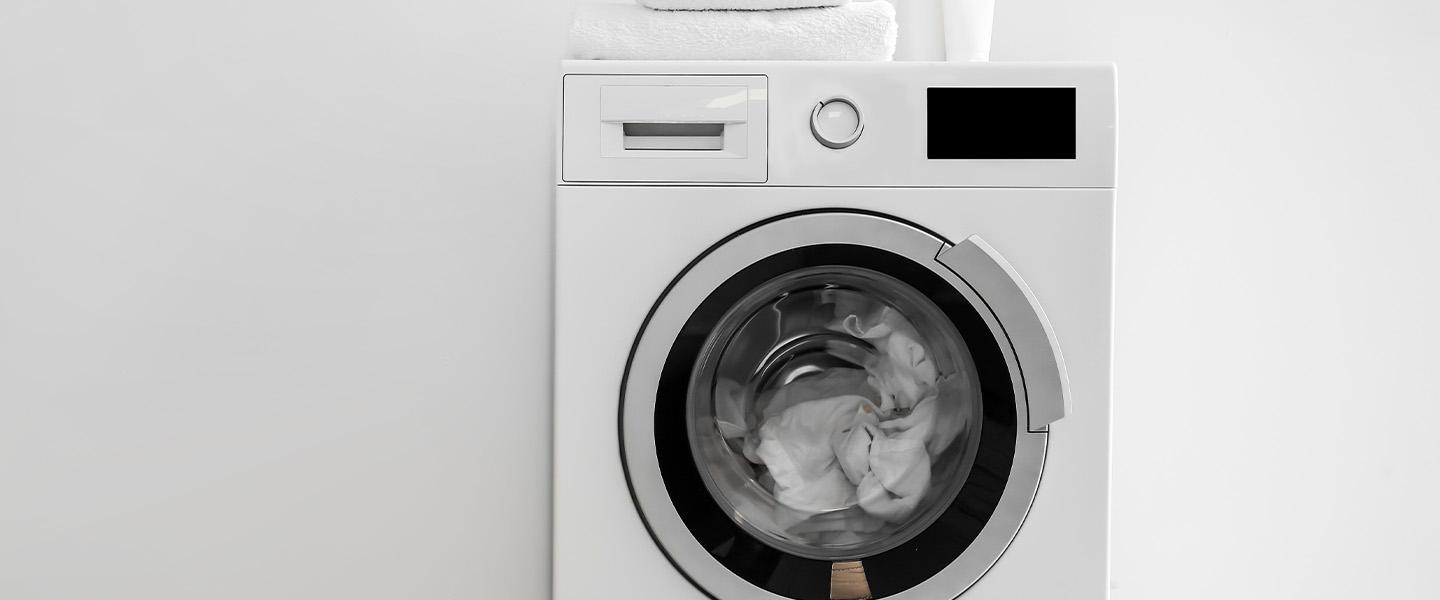How to Clean Pet Bedding
There's no doubt that pets bring us owners joy, but they can also bring mess! Whether it's stubborn odours, pesky allergens, or the occasional accident, pet bedding can take the brunt of it.
But don't worry too much. We're on hand with tips and tricks to keep your furry friend's favourite spot fresh and contribute to a cleaner and healthier home.
Why washing pet bedding is important
- Flea prevention
Fleas, ticks, and other parasites can infest pet bedding. Washing at high temperatures helps kill these pests and prevents infestations so you can maintain a clean environment for your pet and yourself.
- Odour control
Regular washing helps eliminate pet odours by removing dirt, dander, and the inevitable 'doggy scent' that can accumulate.
- Longevity of bedding
Washing pet bedding is a key factor in ensuring its longevity. Pets can be tough on their bedding with shedding, dirt, and occasional accidents. Regular washing helps remove these elements, preventing the buildup of grime that can break down fabric fibres over time.
By maintaining a clean and well-cared-for environment, you're extending the life of your pet's bedding, ensuring it remains cosy and intact for many furry naps to come.
- Allergen help
Washing pet bedding is a crucial step in managing allergens. Pets can leave behind hair, saliva, and other allergens on their bedding, which can trigger some people's allergic reactions.
Regular washing is a simple yet effective measure to reduce allergy symptoms and ensure a comfortable living space for everyone in your home.
How to machine wash a pet bed
Here are the essential steps to ensure your pet's bed comes out of the wash smelling fresh and looking spotless.
- Vacuum away any pet hair
Vacuuming your pet bed before tossing it into the washing machine is a practical pre-wash step that removes any stubborn cat hair or dog hair, loose dirt and other debris.
This prevents fur from clumping in the washing machine and stops any draining issues.
- Remove the cover if necessary
If the pet bed has a removable cover, take it off along with any removable fillings, pet blankets or cushions. This ensures a more thorough cleaning and prevents damage to delicate parts during the wash. If there are no detachable parts, check if the entire bed can be placed in the washing machine.
- Wash pet beds according to the label’s instructions
Washing cat and dog beds according to label instructions is important for maintaining the integrity of the bed and ensuring it comes out sparkling.
Following these instructions prevents potential damage to the fabric, maintains colour vibrancy, and helps preserve any special features, ensuring the pet bed remains comfortable, durable, and safe for your four-legged friend.
We'd also recommend using pet-safe laundry detergent, as it's gentler on your cats' or dog's skin.
- Do an extra rinse cycle if needed
Giving your pet bed an extra rinse cycle during machine washing ensures the removal of any lingering washing liquid residues which could irritate your pet's skin.
An extra rinse also guarantees that the bed is thoroughly cleaned, leaving it completely fresh and providing a plush and irritation-free sleeping environment.
- Dry according to the label’s instructions
Labels typically provide recommendations on drying methods and temperatures so that the bed doesn't shrink, lose its shape, or suffer unnecessary wear and tear.
Following these instructions prevents potential damage during the drying process and contributes to a longer lifespan for the pet bed. If there are no drying instructions, we recommend air drying your pet's bed to maintain its shape.
How to hand wash a pet bed
If your pet's bedding can't go into the washing machine, don't worry! With our step-by-step guide, you'll have it looking like new in no time.
- Remove hair and dirt
Hair and dirt can become deeply embedded in the fabric, making it more challenging to clean thoroughly by hand. By pre-removing loose debris with a vacuum cleaner, you ensure that the cleaning solution can get deeper into the fabric, leading to a cleaner pet bed after hand washing.
This step also prevents the formation of clumps or patches of dirt during the washing process.
- Spot clean stains
By spot-cleaning noticeable stains individually, you can apply targeted cleaning solutions without subjecting the entire bed to a full wash. You'll be conserving water and energy and also minimising wear on the fabric that can occur during repeated washing.
- Soak
Let the pet bed soak for at least 15-20 minutes. This step lets the cleaning solution seep into the fabric, helping to loosen up stubborn dirt and odours. It's an effective way to ensure a deep and thorough clean.
- Rinse thoroughly
Drain the soapy water and refill the sink or bath with clean water. Rinse the pet bed thoroughly until all solution is removed. You may need to repeat this step to ensure a complete rinse.
- Dry according to instructions
Follow the recommended drying method to prevent the bed from shrinking, losing its fluffiness, or suffering unnecessary wear.
If there are no drying instructions, lay the pet bed flat on a clean, dry towel or in a well-ventilated area to air dry. Ensure it's in a shape that matches its original form.
Invest in high-quality pet bedding with Sleepseeker
Crafted from high-quality materials, our range of pet bedding is designed to withstand the test of time, offering durability that ensures long-lasting cosiness for your pet.
Sleepseeker's pet beds offer the perfect blend of luxury and practicality, making them a worthwhile addition to your home. Treat your loyal companion to the ultimate nighttime (or naptime) comfort with a bed that reflects our commitment to excellence in every snuggle-worthy detail.
FAQs about how to clean pet bedding
How often should you wash a dog bed?
As a general guide, washing your dog's bed every two to four weeks is a good starting point. However, if your dog spends a lot of time outdoors, is prone to skin issues, or has allergies, more frequent washing may be necessary.
Regular washing helps control odours, eliminates allergens, and ensures a clean and comfortable space for your furry friend.
How often should you wash a dog bed cover?
Washing a dog bed cover every one to two weeks helps keep it clean and free from odours, allergens, and potential pests. However, if your dog is particularly messy or sheds a lot, you may want to wash the bed cover more frequently.
How do you get the smell out of dog beds?
To banish those stubborn pet odours from dog beds, remove the bed cover and wash it with pet-safe detergent and a cup of white vinegar to neutralise smells. Vacuum or shake off loose fur and debris, then sprinkle baking soda over the bed and let it sit for a few hours to absorb odours.
If possible, expose the bed to sunlight, as it has natural deodorising properties. Consider using pet-friendly fabric fresheners or sprays between washes, and establish a routine of regular cleaning to prevent smells from building up. Always check care instructions to ensure proper cleaning without damaging the bed.
What's trending now...
-

Slumberdown Super Support Firm Support Side Sleeper Pillow, 2 Pack
£12.00
Shop Now -

Slumberdown All Seasons 3-in-1 Combi 15 Tog (10.5 + 4.5 Tog) Double Duvet
£30.00
Shop Now -

Slumberdown Wonderfully Warm Dual Control Electric Blanket - Double
£77.00
Shop Now -
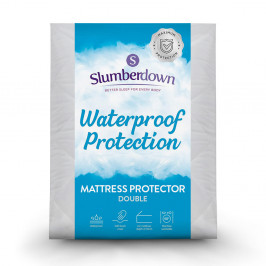
Slumberdown Waterproof Mattress Protector - Double
£17.50
Shop Now -

Slumberdown Sleep Soundly Mattress Topper, Single
£22.00
Shop Now -

Slumberdown Paws for Slumber Grey Pet Bed, Extra Large
£49.50
Shop Now -

Slumberdown Paws for Slumber Medium Pet Bed Spare Cover, Grey
£17.00
Shop Now -

Slumbalux Hollowfibre Toy Stuffing Bag, 2 KG
£17.00
Shop Now -

Slumberdown Anti Allergy Pillow Protector, 2 Pack
£15.00
Shop Now -

Slumberdown Unwind Outside Endless Lazing Waterproof Blanket, Light Green
£46.50
Shop Now -
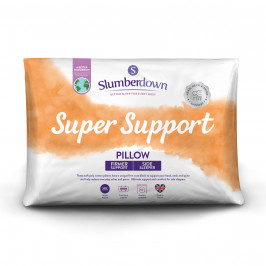
Slumberdown Super Support Firm Support Side Sleeper Pillow
From: £12.00
Shop Now -
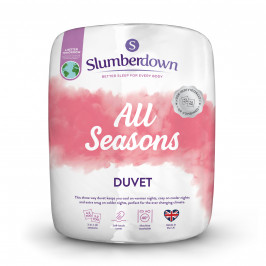
Slumberdown All Seasons 3-in-1 Combi 15 Tog (10.5 + 4.5 Tog) Duvet
From: £25.00
Shop Now -

Slumberdown Wonderfully Warm Electric Blanket
From: £47.00
Shop Now -
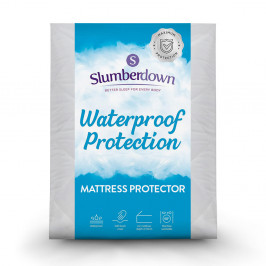
Slumberdown Waterproof Mattress Protector
From: £16.50
Shop Now -

Slumberdown Sleep Soundly Mattress Topper
From: £22.00
Shop Now -

Slumberdown Paws for Slumber Extra Large Pet Bed
From: £49.50
Shop Now -

Slumberdown Paws for Slumber Medium Pet Bed Spare Cover
From: £17.00
Shop Now -

Slumbalux Hollowfibre Toy Stuffing Bag
From: £10.00
Shop Now -

Slumberdown Anti Allergy Pillow Protector
From: £15.00
Shop Now -

Slumberdown Unwind Outside Endless Lazing Waterproof Blanket
From: £46.50
Shop Now -

Slumberdown Super Support Firm Support Side Sleeper Pillow, 4 Pack
£25.00
Shop Now


